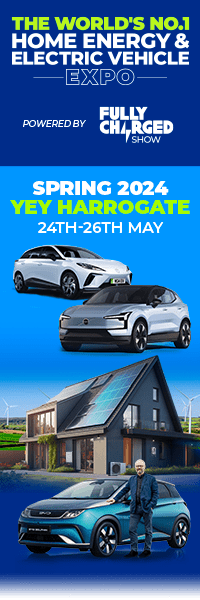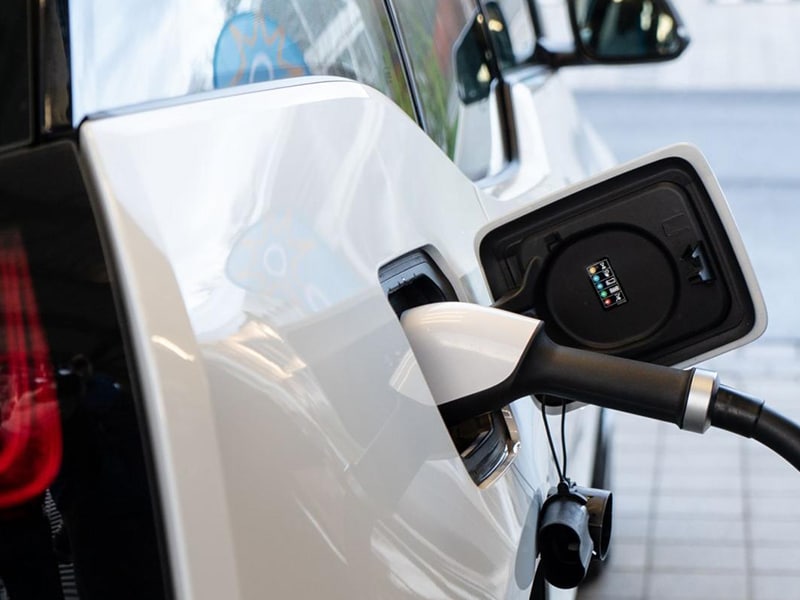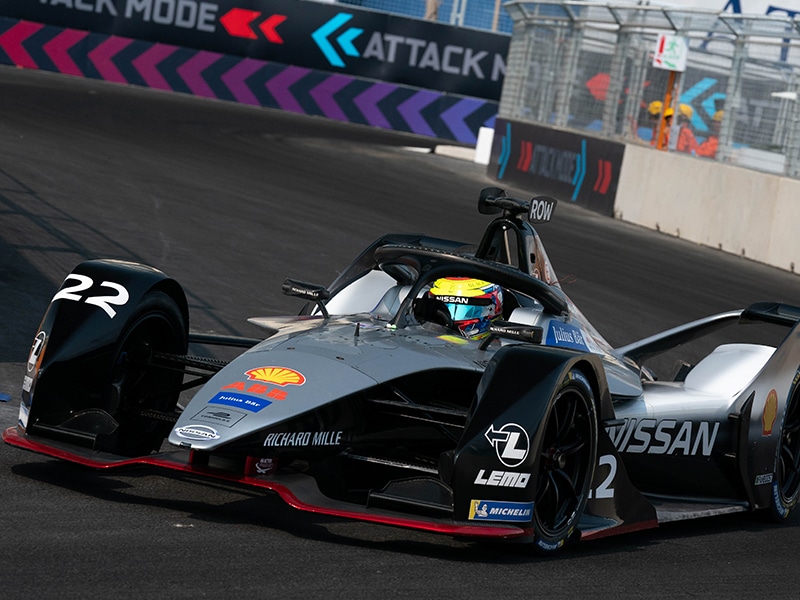
Wind, Solar & Storage have seemingly stolen the clean energy headlines of late, with Lithium Ion Batteries in particular making positive progress. But as we are always say, there is no such thing as a single silver bullet and we are going to need an arsenal of solutions to effectively tackle climate breakdown and air pollution. The next wave includes numerous technologies that also have the power to change our world for the better over the coming years, including Wave, Tidal, Hydroelectric, Renewable Hydrogen and Nuclear Fusion.
Hydroelectric
Electricity can be generated from water if a sufficient flow falls through an adequate distance. One cubic meter of water falling 1 meter generates 1kW of electricity.
It is useful to divide hydropower plants into two types: those with dams (and possibly pumped systems); and run-of-river. In the UK there is little scope to increase the hydroplants requiring a dam. However, there is scope to increase the UK’s capacity from run-of-river plants, which divides into high head in places with mountains like Wales and Scotland, and low head more often found in Southern England.
In 2010 the Environment Agency identified at least 25,935 potential sites where hydropower might be installed in England and Wales. Of these they classified 5,016 as what they called win-win, meaning the site was a good one for hydro and installing a plant would improve the local environment, especially fish passage. By way of comparison the Domesday Book records 5,624 mills in existence at the time of the Norman Conquest.
At present there is a total of 628 developed sites in England and Wales, leaving plenty of scope for capturing more energy from the power of falling water.
Hydropower has many advantages over others sources of renewable energy. Its seasonal generating profile matches demand; it is at its greatest in winter when demand is at its highest. It is available day and night, and thanks to each site’s flow duration curve, in predictable volumes. Its energy payback – the amount of energy generated over a plant’s use-life divided by the energy that was used to create the plant – is higher than for any other technology, and nearly 8 times higher than wind which is the next highest (refer to chart).
Why is there not much more hydropower? The simple answer is over-regulation and lack of support. The current financial incentive for new plants (the Feed-in Tariff) will end in March 2019 and there is no existing plan to renew it. But the major constraint is the enormous number of ever-accumulating bureaucratic hurdles that have been created in the last decade to satisfy environmental regulators. Amongst these the protection of eels is probably the greatest constraint. Eel populations have crashed in recent years; the cause of this crash is unknown but it certainly does not include hydropower, and does not justify the project-killing requirements of ever-smaller screens.
If all the potential win-win sites identified by the Environment Agency in England and Wales were developed, hydro could contribute at least an additional 219MW of clean electricity to the grid, much of it used locally with minimal losses in transmission and enough to power 291,000 homes.
by Anthony Battersby
Wave & Tidal
The potential
The Carbon Trust estimate that wave and tidal stream energy has the potential to meet up to 20% of the UK’s current electricity demand.
Tidal Energy
Tidal streams are created by the constantly changing gravitational pull of the moon and sun on the world’s oceans. Tides never stop, with water moving first one way, then the other, the world over. Tidal stream resources are generally largest in areas where a good tidal range exists, and where the speed of the currents are amplified by the funnelling effect of coastlines and seabeds (e.g. in narrow straits and inlets, around headlands, and in channels between islands).
Tides can be predicted years into the future, and it is this predictability that makes tidal energy such a valuable resource.
There are various different concepts being demonstrated and tested to capture the kinetic energy of tidal streams, the majority of which are based around turbine technology. Interestingly, as water is over 800 times denser than air, tidal turbines can be considerably smaller than their cousins in the wind energy sector to generate the same amount of power.
Whilst the tidal energy sector is still in its infancy, significant progress has been made in recent years to bring tidal energy to a commercial reality. In Orkney, local tidal energy developer, Orbital Marine Power, generated over 3GWh of electricity within a 12 month period of testing its floating prototype at the European Marine Energy Centre (EMEC): that’s the equivalent annual electricity demand of around 830 UK households and at times the technology was supplying over 25% of the electricity demand of the Orkney Islands – from just one prototype under test!
Across the Pentland Firth off the north of the Scottish mainland, a tidal array development – MeyGen – is being built out with four seabed mounted tidal turbines already deployed, having previously been tested at EMEC. A little further north, in Shetland, Nova Innovation are demonstrating a smaller scale tidal energy array as well.
Wave Energy
Waves are formed by winds blowing over the surface of the sea. The size of the waves generated depends on wind speed, its duration, and the distance of water over which it blows, bathymetry of the seafloor and currents. The resultant movement of water carries kinetic energy which can be harnessed by wave energy converters.
The best wave resources occur in areas where strong winds have travelled over long distances. For this reason, the best wave resources in Europe occur along the western coasts which lie at the end of a long fetch (the Atlantic Ocean).
Wave energy is still in its infancy, further behind the development of tidal energy as there is yet little convergence as to the best technology to harness the power of the waves.
However many technologies are proving that it can be done! The world’s first offshore wave energy generation into a national grid took place in 2004 off the west coast of Orkney, Scotland. The device was 120m long, 3.5m in diameter and comprised four tube sections which flexed as waves passed by. Unfortunately that technology is no longer in development, yet it paved the way and inspired a score of inventors and entrepreneurs the world over to design a technology that can harness the power of the waves and progress it towards commercial maturity.
Many weird and wonderful concepts have been trialled, whether it be in tank facilities to full-scale in-sea demonstrations at the European Marine Energy Centre (EMEC) in Orkney where the majority of concepts have been tested to date in the gritty, salty and unrelenting forces of the sea.
While there are many challenges yet to overcome, not least designing a machine that can not only withstand, but harness this forbidding natural resource, the prize of wave energy is too great for it not to become a standard part of our energy mix in the future.
by Lisa Mackenzie
Nuclear Fusion
The fusion of hydrogen into helium has powered our Sun for 4.6 billion years. Such reactions release four million times more energy than fossil fuels. But to shrink the Sun into reactors on Earth, the fuel must be heated to 150 million degrees Celsius – 10 times hotter than the Sun.
Scientists have proved that fusion can be done in magnetic chambers named “tokamaks”. The fuels are two forms of hydrogen: deuterium (abundant in seawater) and tritium (bred from lithium inside the fusion reactor). The amount of lithium in a phone battery and the deuterium from three litres of water would supply the average European person’s electricity needs for seven years; the fuels react to produce helium, with no greenhouse gases in sight.
Fusion appears to be the “holy grail” of energy, so why is it not a reality? The short answer is that creating miniature stars is incredibly complex. Although we’ve mastered the basics of fusion, we still need to build machines that can achieve an energy gain and operate continuously. In the 2030s, an international tokamak experiment called ITER will be the first device to generate more thermal energy than it uses. The next step is a demonstration power plant that provides electricity to the grid, expected around 2050. Therefore, we could begin to see star machines supplying clean energy all over the world in the second half of this century.
by Dr Chantal Nobs
Nuclear Fission
The carbon footprint of electric vehicles is only as small as the grid that charges them. Nuclear power is already the largest emission-free power source in the European Union, North America, United Kingdom, and other leading economies, providing carbon-free power for charging electric vehicles around the clock.
Nuclear power plants provide about 10 percent of world’s electricity without emitting greenhouse gases. Advanced economies that have successfully decarbonized their electricity sectors, such as France, Sweden, and Ontario, Canada, have high proportions of nuclear power in their generation mix. Many experts say that nuclear energy must play a role in solving the climate problem. However, nuclear power plants in some places are at risk of early closure because of inexpensive natural gas and market issues.
Advanced reactor designs can improve on traditional nuclear reactors, making nuclear plants more efficient, affordable, economical and even safer. These designs are smaller, can operate at higher temperatures, and use alternative methods of cooling instead of water, such as molten salt. These advances will enable nuclear power plants to compete with fossil fuels on cost, serve new markets, and pair better with wind and solar. All of this would work well with electric vehicles, and the climate.








